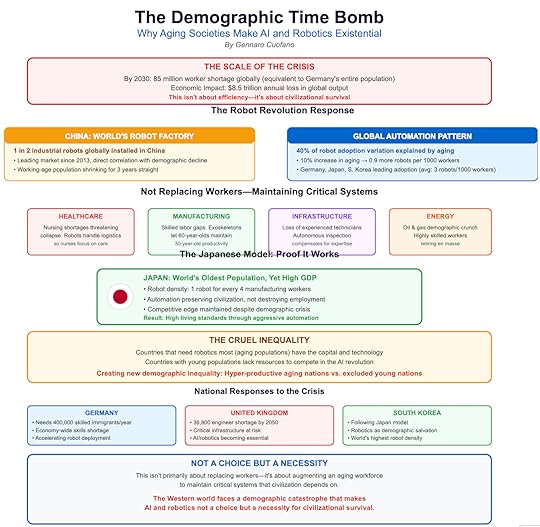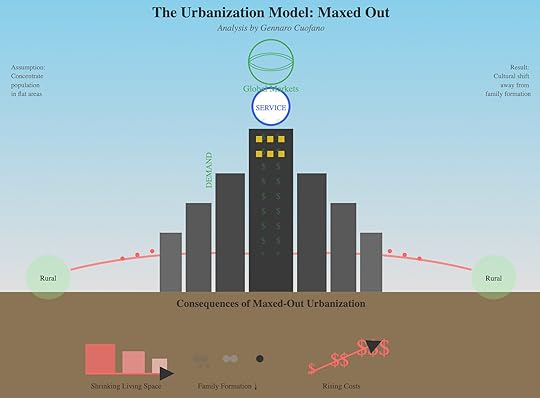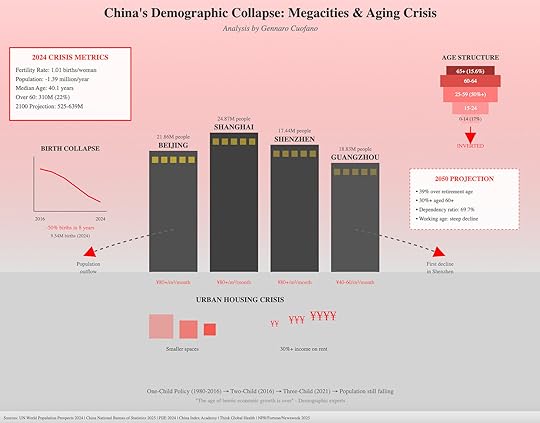How The Demographic Time Bomb Will Influence AI Development

The Western world faces a demographic catastrophe that makes AI and robotics not a choice but a necessity for civilizational survival. This isn’t about efficiency or profit margins—it’s about maintaining basic infrastructure and services as the working-age population collapses.
The numbers paint a stark picture of the crisis ahead.
Global population collapse isn’t sci-fi any longer; it’s the disappearance of middle-aged workers who form the backbone of industrial civilization.
We pretty much maxed out the urbanization model of industrialization, where the assumption was to bring in as many people as possible in a flat area of the country to have them focus on the service side of the economy, thus enabling the formation of megalopolises, which enabled the concentration of massive demand, and the formation of global markets.
Yet, these massive urban centers also came with huge costs, which is, if you were part of this trend, you also had to live in a place that became more and more expensive, even with a shrinking living space, thus making the ability to have kids and raise them become sort of culturally obsolete.

China, more than all other Western countries, fell into the same super-urbanization trap, which propelled it toward massive economic progress but also, probably, the most dangerous demographic time bomb of our times.

That explains why China’s response to the problem has been nothing short of revolutionary. One in every two industrial robots installed globally now goes to China.
The country has been the leading market for industrial robots since 2013, and this trend directly correlates with demographic decline. Population aging alone can explain the variation in robot adoption between countries.
When Germany faces similar pressures, it responds similarly—deploying robots at rates that would have seemed like science fiction a decade ago.
But here’s what most analyses miss: this isn’t primarily about replacing workers—it’s about augmenting an aging workforce to maintain critical systems. In healthcare, where nursing shortages threaten to collapse entire hospital systems, robots handle logistics so nurses can focus on patient care.
In manufacturing, exoskeletons allow 60-year-old workers to maintain the productivity of their 30-year-old selves. In infrastructure maintenance, autonomous inspection systems compensate for the loss of experienced technicians.
The Japanese model proves this can work. Despite having the world’s oldest population, Japan maintains a high GDP and living standards through aggressive automation. Their robot density—one robot for every four manufacturing workers—isn’t destroying employment; it’s preserving civilization. South Korea follows a similar path, viewing robotics not as job destroyers but as demographic salvation.
The cruel irony is that the countries that need robotics most—those with aging populations—are also the ones with the capital and technological capability to deploy them.
Meanwhile, countries with young, growing populations lack the resources to compete in the AI revolution, potentially creating a new form of demographic inequality where aging rich nations become hyper-productive through automation. In contrast, young poor nations face technological exclusion.

The post How The Demographic Time Bomb Will Influence AI Development appeared first on FourWeekMBA.



